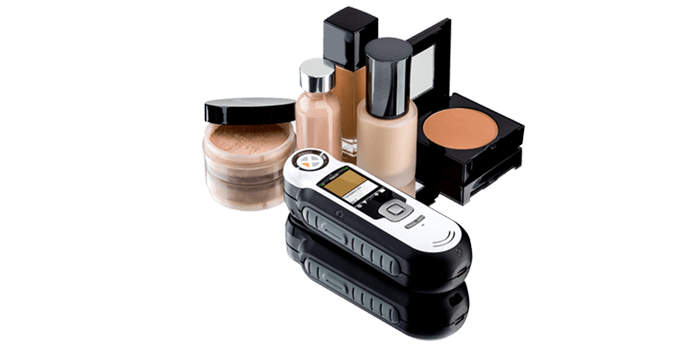Using a blend of art and color science, Pantone and X-Rite are making it easier for women around the world to choose the best foundation for their skin type.
Back in December we blogged about how the CAPSURE Cosmetic spectrocolorimeter and the CAPSUREme mobile app are revolutionizing the way women buy makeup.
Today we’ll visit the X-Rite Cosmetics Lab for a behind-the-scenes look at how we build these custom skin tone product databases so manufacturers can take advantage of CAPSURE Cosmetic and CAPSUREme technology for their cosmetic lines.
Since it’s a living tissue with many layers, blemishes, curves and wrinkles, skin is tricky to measure.
To get a good representation of the overall color, the X-Rite CAPSURE Cosmetic device takes 27 photos of each sample, from three different angles, under 9 LED illuminants. Then it compares each color sample against the PANTONE SkinTone™ grid, a snapshot of all 110 possible skin tones (or other proprietary databases), to determine the best foundation shade and complementary harmony colors for that skin tone.
Because it’s so popular – more than 40 million customers worldwide have already had their skin color measured in retailers around the world – X-Rite is working to make the technology even more accessible with the CAPSUREme cosmetic matching app.
CAPSUREme can be used anywhere, anytime. X-Rite Pantone creates a custom database of products for a cosmetics retailer, then turns it into a branded target card and a smartphone app. Clients simply download the CAPSUREme app on their smartphone and photograph the target card next to their skin to see the closest foundation matches from that retailer’s collection.
At our headquarters in Grand Rapids, Michigan, we have a large Cosmetics Lab that is dedicated to creating custom skin databases for manufacturers’ cosmetics lines. It’s a very cool place, and today we’ll take you inside to see what happens when a manufacturer asks us to develop a custom skin database for their cosmetics line.
Inventory cosmetics & build database
After initial meetings, the manufacturer sends samples for each type and color of makeup they want us to include in their custom CAPSURE device or CapsureME app. These can range from foundations, bronzers, tinted moisturizes… anything that holds a skin tone.
We start by identifying, inventorying, and adding each sample into a master database by color and product characteristics, along with the cosmetic’s product code, description, and SKU.
“Wet work”
The cosmetics head next door to be measured using the X-Rite VS450 non-contact spectrophotometer. We’re working with a variety of textures, from liquids to compacts to loose powders, and the measurement process varies for each.
For liquids, we apply them to a Leneta Card and measure.
For powders, we use various rigs & jigs to hold the samples in place.
The color data for each product in recorded in the master database.
Database categorization
Once we have spectral data for each cosmetic, we categorize the entire database by color and classify each product by skin tone. It’s a technical process that involves color standard comparison and a lot of mathematical calculations, and X-Rite has developed custom applications to facilitate the process.
Although the computer analysis gets it close, it can’t account for the unique attributes of the different cosmetics and how they change when applied to the skin. We must consider every aspect of the product and what it’s capable of. Is it wet or dry? Sheer, opaque, or textured? Even the darkening effect of oxidation will play a role in final appearance. The only way to identify these characteristics is to evaluate them on actual skin.
Test on skin models
The cosmetics are tested on live models who are selected for their unique skin tones.
 A Cosmetic Lab Assistant applies small squares of color to the model’s forearm, then visually evaluates whether the cosmetics identified by the computer analysis are correct.
A Cosmetic Lab Assistant applies small squares of color to the model’s forearm, then visually evaluates whether the cosmetics identified by the computer analysis are correct.
Our lab is fitted with Spectralight QC overhead luminaires, which provide consistent, adjustable lighting to evaluate how the makeup will appear in any lighting condition.
At this point, marketing aspects and customer perception must also be considered. Even if a color appears to be a good match with an instrument or on the skin model, if it looks “off” in the packaging it won’t sell because the customer will think it’s the wrong color for their skin.
Program the database
Any cosmetics that we realize were incorrectly classified by the computer analysis are updated in the database. The skin tone matches are finalized and each product is assigned its appropriate skin tone number.
We apply the database of cosmetics and corresponding skin tone matches to the CAPSURE device for use at the cosmetics counter, or to the manufacturer’s CAPSUREme application for use on a mobile device.
Delivery, training, and ongoing support
Finally, we train the manufacturers and retailers how to use their new color matching products. We also provide ongoing support for technical issues and color selection questions.
Of course, the beauty industry is always changing. Once we build a cosmetic database, it’s easily updated to include new product lines or seasonal updates.
Who’s using it?
Brands like Sephora, Elizabeth Arden, Douglas, Kicks, Priceline, VDL, and No7 (Manufactured by Walgreens Boots Alliance) have already been using the CAPSURE Cosmetic device at retail locations around the world.
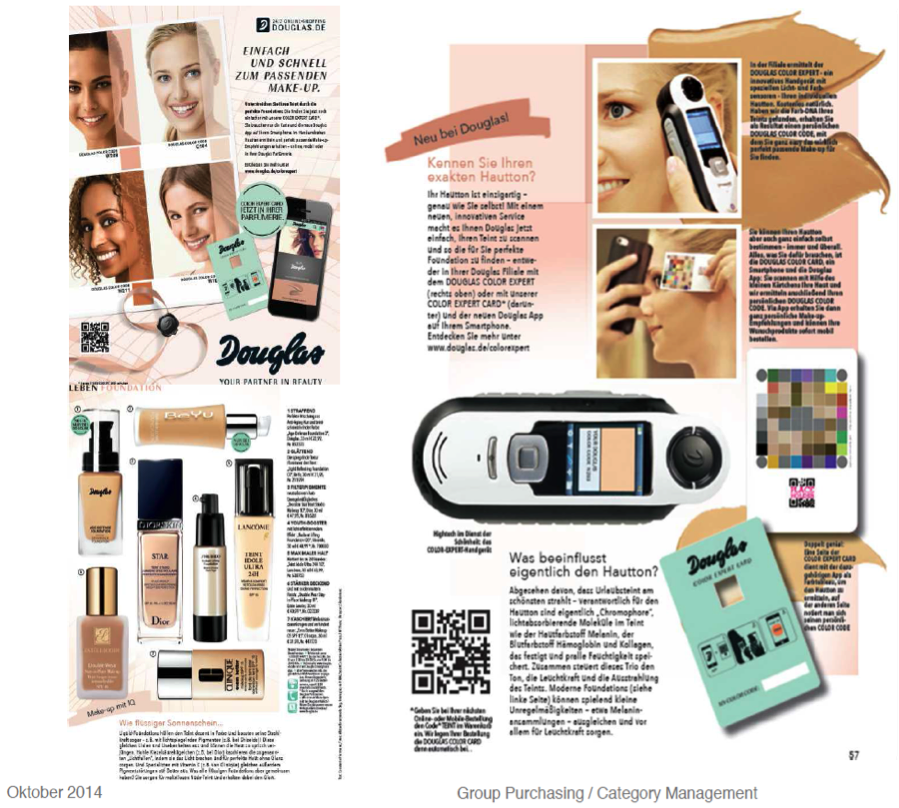
Cosmetic retailer Douglas worked closely with us during the development process of CAPSUREme. Douglas Card magazine featured CAPSURE Cosmetic and CAPSUREme in their October 2014, November 2014, and April 2015 issues.
It’s a very popular technology that is growing quickly, and bloggers are loving it.
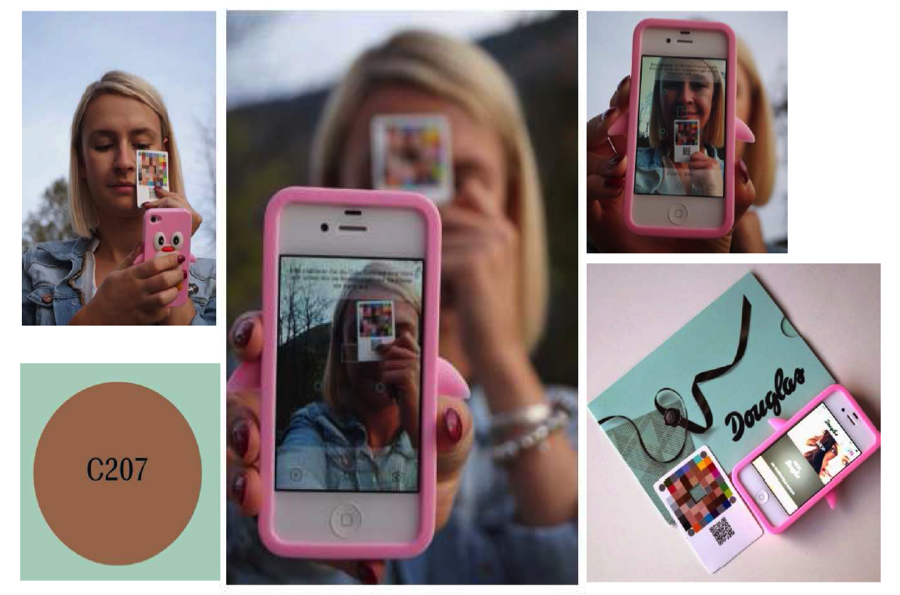
“I have scanned myself in under 5 minutes and I have received my color code immediately…have also discovered a product from Lancôme, which I probably wouldn‘t have tried on my own.”- Blogger Denise from Germany, using the Douglas Color Card.
Watch for CAPSURE Cosmetic and CAPSUREme technology at cosmetics retailers near you!
Featured Color Management Solutions
Learn more about these featured products:
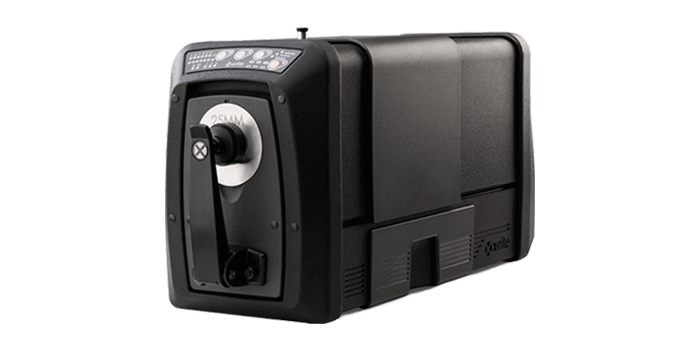
Ci7860
The Ci7860 benchtop spectrophotometer creates the industry’s most accurate digital color standards to better communicate color specifications to suppliers across the entire supply chain.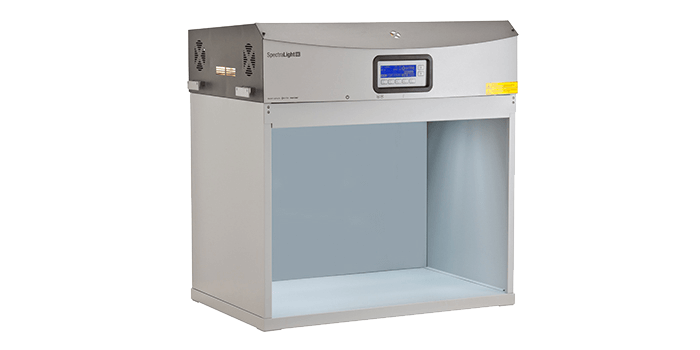
SpectraLight QC
The SpectraLight QC is the light booth of choice for color-critical visual assessment of large and small items under daylight and other lighting conditions; includes 7 light sources.